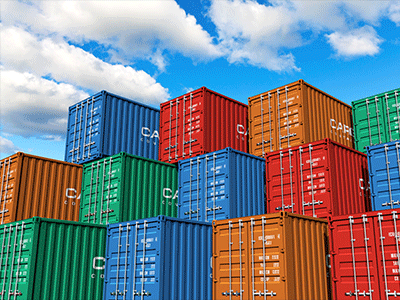Parcels trade: The good, the bad, and the ugly?
Parcels trade: The good, the bad, and the ugly
14 March 2019 | Evdokia Moïsé
What do a clothing designer and a manufacturer of counterfeit medications have in common? For Praew, an up-and-coming clothing designer who runs Lanna Clothes Design in Thailand, and Paul, who manufactures and sells fake medicines to customers around the world, it’s simple: both rely on e-commerce to grow their business and send hundreds of parcels to customers overseas every month.
But while Praew’s business creates jobs that support her local community in rural Thailand, Paul’s business represents a threat to the health of unsuspecting consumers at home and abroad. The challenge facing customs officials today is to identify which of their parcels at the border contain legal goods, and should pass through as expeditiously as possible – and which are illicit, and should be confiscated.
Good things come in small packages
In recent years, a dramatic increase in the number of parcels crossing borders has been enabled by digital technologies that help connect supply and demand globally, facilitate payments, and support the logistics of the delivery process. In 2015, e-commerce transactions were estimated at USD 260 billion worldwide, and were still largely dominated by domestic dispatches (76%). But international dispatches are growing at nearly twice the rate of domestic e-commerce, and are expected to grow by about 25% annually until 2020. Digital platforms, express delivery companies, freight forwarders, and postal services are critical components of this evolving parcel eco-system.
The nature and composition of parcel trade is also changing. While business-to-business (B2B) transactions originally dominated the market, business-to-consumer (B2C) transactions are projected to reach almost 30% of all parcels trade by 2020. Consumers increasingly appreciate the product diversity and interesting prices that they can obtain by ordering online and from abroad.
Many small firms – like Praew’s – take advantage of the booming digital transformation to internationalise at a lower cost, expanding customer reach and sales, creating new jobs and improving the livelihood of their local communities. Within six years, Lanna Clothes Design grew by 70%, from a 5-person business to more than 35 employees with online orders generating up to 85% of total sales.
At the same time, the sheer number of traded parcels poses new challenges for customs authorities and other agencies in charge of controlling goods at the border. With more individual shipments to clear and inspect at customs, workloads are growing, stretching the capacity of border authorities to catch illicit goods or properly identify fraud concerning the goods’ value. Risk assessment strategies meant to differentiate between Praew’s yoga pants and Paul’s shipments of fake drugs may also be more difficult to implement.
Parcels trade offers an important opportunity for firms, including for those that do not otherwise have a sufficient domestic customer base. Governments can support these businesses – which are often small and medium-sized enterprises – by removing procedural burdens that make it more difficult for them to get their products more quickly and efficiently into the hands of international customers. While digital connectivity helps overcome some of the obstacles to international markets, the physical delivery bears its own costs, which are proportionally more burdensome for lower value parcels. Streamlined administrative procedures for handling parcels at the border will make a difference for these items more than for goods sent through traditional trade paths.
Thwarting the bad and the ugly, without losing sight of the good
Border agencies hold a significant responsibility to protect against the threats of illicit shipments, ensuring public health and safety for customers, and defending brand reputation and innovation. However, a blanket tightening of controls may risk being ineffective in identifying illicit parcels due to limited ressources available to border agencies, but may also risk obstructing perfectly legitimate shipments and increasing the cost of crossing borders in a way that would keep small firms like Praew’s out of the market.
Instead, a better targeting of shipments could allow border agencies to catch offending items while preserving the flow of legitimate trade. Such targeting could include differentiating between low and high value consignments, identifying trusted traders, and harnessing cross-country co-operation to assess risks, including through better use of digital technologies. Advanced electronic cargo information and automated risk assessment already support border control efficiency today, and big data analysis or pattern recognition may offer additional non-intrusive paths.
Policies that seek to address the unique challenges posed by parcel trade must consider the risks alongside the opportunities. Doing so will allow Praew’s legitimate products to smoothly reach their customers, while sending Paul’s fake drugs to the incinerator.
Related research
Trade facilitation
In a globalised world where goods often cross borders many times as both intermediate and final products, trade facilitation helps lower overall trade costs and increase economic welfare, in particular for developing and emerging economies.
Digital trade
The digital transformation has reduced the costs of engaging in international trade, facilitated the co-ordination of global value chains (GVCs), helped diffuse ideas and technologies, and connected a greater number of businesses and consumers globally.

